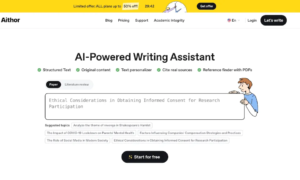Writing an essay can be difficult if you aren’t really sure how to go about it. That’s why we’ve laid out eight amazing steps you can use to write the perfect essay, whether it’s your English teacher assigning an essay on Romeo and Juliet or you want to write an article of interest to your company’s customers that will inspire them to reach out to you with questions and orders. These steps will make writing the perfect essay something you look forward to instead of dreading, so dive in now and be that paper writer you want to be!
1) Choose your topic
Choosing your topic is one of the most important steps in writing an essay. Next, narrow down your topic so it’s specific and manageable. You don’t want to just write about technology, for example, because that topic could encompass everything from smartphones, to programming languages, to social media networks like Facebook. Instead, choose a more specific aspect of technology that interests you: smartphones or programming languages.
2) Do your research
Researching is one of the most important steps in writing a successful essay. A well-researched essay is more likely to be longer, have a stronger argument, and have better reasoning than one that lacks research. In order to make your essay long, strong, and with reasoning, you need to be thorough in your research. When you begin your research, ask yourself why am I researching this topic? Is it for school? For work? To write an informative blog post?
3) Create an outline
Creating an outline can be difficult. It ’s important that you take time to come up with a clear plan for your essay, otherwise it will be hard for you to keep track of where you’re going and what you’re writing about. You should also include a title in your outline so that when you are done, all that is left is writing the introduction and conclusion. Once this is done, it will make writing the essay much easier because all you have to do is fill in between these sections with your thoughts and research.
4) Write your thesis statement
Writing your thesis statement is an important first step in writing your essay. There are many different types of thesis statements, so it’s a good idea to review them and find the one that suits you best. For example, some essays may use a surprising or even controversial statement as their thesis statement while others might use more general statements. Once you decide on a type of thesis statement, it’s time to write!
5) Write the body of your essay
Your essay body should be well-structured, with a clear introduction, three major supporting points and one closing paragraph. It should also have an introduction paragraph that gives readers an idea of what they are going to read. The following paragraphs should each have a sentence or two explaining what you are discussing and how it relates back to your topic sentence. Try not to exceed five sentences in each paragraph.
6) Write the conclusion of your essay
A conclusion is an important aspect of any essay, as it provides readers with your thoughts on the subject and ends on a strong note. Here are four key aspects that you need to include in your concluding paragraph: 1) restate your thesis statement, 2) rephrase any major arguments or points made in previous paragraphs, 3) summarize what has been discussed so far, 4) give the reader some final thoughts about what you have said.
7) Edit your essay
Edit your essay. I often find myself rereading my essay and finding errors that were not there before, so take a break from writing if you need it. Read through your essay and edit for grammar, spelling, punctuation, sentence structure, and clarity. Be sure to check for homonyms (words that sound alike but are spelled differently) as well. The spellchecker on Microsoft Word will not catch them all.
8) Publish your essay
Publish your essay by clicking on Publish. You will be taken to a page with two options, Publish or Save Draft. If you click Publish, your work will be published and available for anyone with internet access in the world to see. If you click Save Draft, your work is saved as a draft and will not be viewable until you choose to publish it yourself.



































